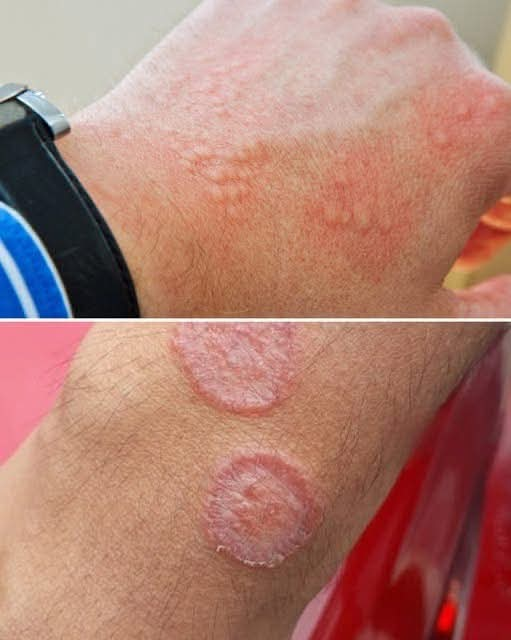Caring for the Skin in the Groin Area: Common Issues and How to Prevent Them
The skin in the groin area undergoes a lot of wear and tear — constant heat, friction, tight clothing, sweat, and frequent grooming. So, it’s no surprise that irritation and rashes are common here. However, understanding the causes behind these issues is crucial for effective treatment and prevention. While most of these problems are harmless, they can be uncomfortable, but with proper care and a few adjustments, they can be easily managed.
Ingrown Hairs
One of the most common causes of irritation in the groin area is ingrown hair. After shaving or waxing, a hair may grow back into the skin instead of outwards, leading to small, red bumps that may itch or hurt. These bumps can sometimes fill with pus. The worst thing you can do is squeeze the bump, as this can lead to infection and scarring. Instead, apply a warm compress several times a day to soften the skin, gently exfoliate to free any trapped hairs, wear loose-fitting clothing to minimize friction, and take a break from shaving until the irritation subsides.
Folliculitis
If the bumps spread and resemble tiny pimples or red clusters, it could be folliculitis — an inflammation of the hair follicles. This is often caused by bacteria or yeast that thrive in warm, moist environments, or by friction from tight clothing, especially after exercise. Hot tubs with poor sanitation are another common trigger. Mild cases can usually be treated with over-the-counter antibacterial cleansers and a thin layer of topical antibiotic. For more persistent flare-ups, a doctor may prescribe stronger topical or oral medications.
Jock Itch (Tinea Cruris)
If the irritation appears as red, scaly, ring-shaped patches that itch and spread along the inner thighs or groin, you may have a fungal infection known as jock itch. This fungus thrives in warm, damp environments, making the groin area an ideal breeding ground. The key to managing jock itch is to stay dry. After bathing, make sure to pat the area completely dry, wear breathable cotton underwear, avoid tight clothing, and apply antifungal cream as directed. Continue using the antifungal cream for about a week after the rash disappears to prevent it from returning.
Contact Dermatitis
Not all rashes are caused by infections. Sometimes, the skin reacts to something it’s come into contact with — a condition known as contact dermatitis. This may result in redness, itching, and small blisters, especially after exposure to irritants like scented soaps, detergents, fabric dyes, or latex waistbands. To treat contact dermatitis, eliminate the irritant by switching to fragrance-free, hypoallergenic products and loose, natural fabrics. Applying a small amount of 1% hydrocortisone cream can help calm itching and inflammation. The rash usually improves within a few days once the irritant is removed.
Intertrigo
Intertrigo is a rash caused by skin-on-skin friction and trapped moisture in skin folds. It often appears as red, raw, sometimes painful skin and may develop an unpleasant odor if bacteria or yeast thrive in the area. To treat intertrigo, allow the area to dry completely after washing — you can even use a hairdryer on a cool, low setting to remove lingering moisture. Apply an absorbent powder or a thin layer of zinc oxide or petroleum jelly to reduce friction. If the rash becomes painful or oozes, a healthcare provider may recommend antifungal or antibacterial treatment.
Prevention
Preventing groin irritation largely boils down to maintaining good hygiene and making a few simple adjustments. Shower after exercising or sweating, and be sure to dry the area thoroughly. Wear moisture-wicking underwear, such as synthetic athletic fabrics or breathable cotton. Avoid sitting in damp gym clothes for extended periods, and if shaving causes recurrent issues, consider trimming the hair instead. Choose mild soaps and detergents that are free from artificial fragrances or dyes, as these can often irritate the skin.
When to See a Doctor
While most groin irritations can be treated at home, it’s important to see a doctor if the rash or bumps don’t improve within a week or two, if they spread rapidly, or if they cause severe pain. Also, if you notice pus, significant swelling, or fever, these could be signs of a deeper bacterial infection or another underlying condition that requires more targeted treatment.
Finding the Right Balance
Caring for skin in the groin area is all about balance — keeping the area clean, dry, and protected without overdoing it. Too much washing or scrubbing can aggravate the skin, while insufficient care allows moisture and bacteria to linger. Finding a middle ground that respects your skin’s natural barrier is key to preventing irritation and promoting healing.
Though groin irritation can be awkward to talk about, it’s extremely common and nothing to feel ashamed of. Most cases respond quickly to consistent, gentle care. With the right approach — mild cleansing, breathable fabrics, and mindful grooming — you can prevent flare-ups, soothe discomfort, and maintain healthy, irritation-free skin.
Healthy skin in this area isn’t about perfection — it’s about awareness and care. Pay attention to how your skin reacts to products, fabrics, and habits. A few thoughtful changes today can save you from weeks of discomfort later on. Your skin will thank you for treating it with patience and protection.
